20 Years With The Nintendo Gameboy
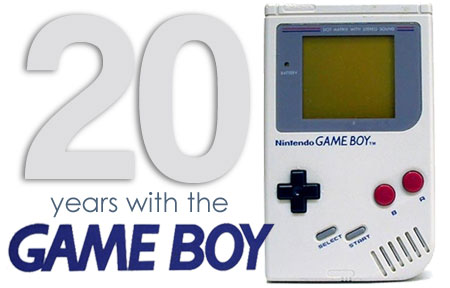
Presented by Zen Albatross
Friends,
I invite you all to raise your glasses in celebration of a momentous occasion in gaming history. In the month of April exactly 20 years ago, our lives were suddenly illuminated by the birth of a friend both loyal and dear; A friend whose illustrious career has set the precedent for portable interactive entertainment. I’m speaking of course about DMG-01, whom you might know better as the Nintendo Game Boy.
From an early age, the Game Boy has proven himself time and again to be a faithful and powerful companion. Along with Nintendo, the good ‘ol Boy single-handedly pioneered portable gaming, paving the way for a new market that has exploded over the past two decades. Many have tried to copy him, but in the long run, no one could really stand up to the 8-bit wunderkind and his special little brand of pocket-sized magic. With his enormous game library, excellent chipset and sturdy build, Game Boy quickly became a role model for future generations of pocket systems. Today, Game Boy remains an icon of classic gaming whose indelible legacy continues to inspire art, music, games and culture. In this article, I’ll be dissecting this incredible device to showcase the various features and games that make the Game Boy such a monumental success amongst gamers both old and new.
History
It should come as no surprise that the history of the Game Boy is essentially the history of portable gaming. Nearly a decade prior to the Gameboy’s release, Nintendo already had their mitts in the portable gaming market: In 1980, Nintendo released the very first Game & Watch, a series of handheld games created by Gunpei Yokoi, the same man responsible for the birth of our beloved Game Boy. The Game & Watch was exactly what its nomenclature suggested – A portable watch and alarm clock with an LCD screen that played a single game. Around 60 Game & Watch titles would be released in the years that followed, taking the form of nearly a dozen different types of handheld units. By the mid-80’s, the Nintendo Entertainment System had emerged as the industry leader in interactive home entertainment, bringing with it unparalleled graphics, sound and gameplay the likes of which consumers had never experienced before. The technology was so innovative and new that most people couldn’t fathom a gaming experience like this being replicated on anything but a home console or computer system.
Fortunately, Nintendo’s legendary ‘R&D1’ team, led by Yokoi, had already begun their scheming on how to bring this kind of gameplay experience to a portable platform. In April of 1989, those plans were finally brought to fruition.
Hardware
The DMG-01 was designed to be the love-child of the Game & Watch and the Nintendo Entertainment System. It was a match made in heaven: Upon completion, the system was capable of the same fluid controls and gameplay that defined so many NES titles. It achieved this through the use of a custom 8-bit processor manufactured by Sharp. The CPU allowed for rapid processing of the system’s dynamic yet simple graphics, which were displayed on a dot matrix LCD screen similar to that of the Game & Watch. The screen sported a 2-bit color palette (only 4 different shades of grey!) and kept the Game & Watch’s signature pea-green tint.
The processor also made possible the Game Boy’s unique sound, which came incredibly close to matching the NES.

Note: The Game Boy shown on the right belonged to a solider stationed in Iraq during the first Gulf War. During an engagement, it was burnt by flaming shrapnel from exploding grenades. It still works! It’s currently on display at the Nintendo World store in NYC – Truly a testament to the Game Boy’s robust design
Audio
The Game Boy’s audio capabilities supported four channels, each producing 4-bit sound: Two pulsewave channels were used for melody and effects. The wave channel provided basic soft-synth with a 32-step sampler, similar to the NES’s DPCM channel. Finally, the Noise channel produces white noise for percussion, ambience or sound effects. Obviously, writing music for a system with only four channels is something of a challenge. Just like in many games for the NES, channels would often cut out abruptly to make room for sound effects. Nevertheless, programmers learned to work within these limitations and used the Game Boy to compose some of the most memorable music of the 8-bit era. A decade later, a number of inventive programmers would create software that aided the creation of musical compositions using the Game Boy. More on that later.
Design
The original Game Boy’s design is oftentimes chuckled at when examined in retrospect. In a world where portable electronics continue to follow the path of ‘thinner and lighter’, it’s easy to scoff at the Game Boy’s comparitively enormous girth and weight. There’s been more than a few occasions in which I’ve heard gamers lovingly refer to the DMG as ‘The Grey Brick’, or ‘Brick Boy’. However, beyond all of this playful namecalling, there’s a great deal to be said about the Game Boy’s remarkably robust design.
Nintendo designed their portable to take one hell of a beating. Believe you me, I’ve gotten more than one friend to dig their supposedly ‘broken’ Game Boy out from a closet, only to find that the device is still in perfect working order. As a quick look at the design shows, it’s hardly a wonder that the majority of these babies are still operational — A shell of hard plastic and a smartly designed interior ensure that the system’s vitals are well-protected from dust and damage. Just like the NES, the Game Boy’s circuitry is like clockwork: Compact and neat, making potential repairs a snap. And speaking of repairs, Nintendo was more than a little generous in the customer support department. The Big N offered its free repair service on the Game Boy and the NES all the way up to the year 2007. That’s almost two decades of courtesy hardware support!
Games
Its hardware and design certainly facilitated the Game Boy’s prosperity, but as with any good platform, the true secret to the system’s success came from its library of games. More specifically, the Game Boy launched and popularized a great number of celebrated game series that continue to thrive in the present day. Here’s a few of them:
Tetris
Since its initial release in 1984, Alexey Pajitnov’s insanely addictive puzzle game has spawned thousands of different variations and has become, without a doubt, one of the most iconic titles in gaming history. Unlike most classic games, Tetris has been recognized not only as an achievement  within the realm of gaming, but as a full-blown pop culture phenomenon whose influence continues to permeate our collective subconscious to this day. When the Game Boy was released in ‘89, Tetris was already 5 years his senior. But this didn’t mean that the newborn pocket system had nothing to offer the world-famous puzzler. With the recent celebration of Tetris’ 25th year of anniversery, it would be outright criminal if I neglected to mention how the Game Boy helped bring Tetris’ legacy to the next level.
within the realm of gaming, but as a full-blown pop culture phenomenon whose influence continues to permeate our collective subconscious to this day. When the Game Boy was released in ‘89, Tetris was already 5 years his senior. But this didn’t mean that the newborn pocket system had nothing to offer the world-famous puzzler. With the recent celebration of Tetris’ 25th year of anniversery, it would be outright criminal if I neglected to mention how the Game Boy helped bring Tetris’ legacy to the next level.
From its humble roots as a small project developed in a Soviet computer center in Moscow, it wasn’t long before Tetris gained international notoriety. It was ported to run on IBM PC, Amiga, Apple IIe and Atari ST, just to name a few. Soon enough, Tetris could run on nearly every kind of computer system available. Nintendo eventually gained publishing rights for the title, and released a version for the NES in 1989. That same year, Tetris was also released for the Game Boy as bundled software included with the system. It went on to become the system’s best-selling game with over 30 million units sold. Aside from the ability to play Tetris anywhere, the Game Boy also enabled players to go head-to-head in realtime competitive matches via the Game Boy Link Cable. This was a huge leap forward for portable gaming, which until now had been a generally solitary endeavor. I can personally contend that Summer Camp in the early nineties would have been a whole lot duller without the occasional 1-on-1 Tetris throwdown.
While Tetris’ popularity continued to surge, the Game Boy debuted several new titles, many of which would go on to become hugely popular franchises.
 Kirby
Kirby
Kirby is without a doubt one of the most celebrated video game mascots of all time. He’s undeniably adorable, loveably strange and ass-kickingly tough, all at the same time. Kirby has appeared in over 15 titles released on almost every major Nintendo system up to the present day. Of course, it’s important to remember that Kirby didn’t make his debut on the NES…
Kirby busted onto the scene with Kirby’s Dreamland in 1992. His first heroic escapade was simple and enjoyable: A four-stage adventure with scaled-back difficulty, intended for beginning gamers. Kirby isn’t your typical platforming hero, however. Instead of the usual jumping, shooting and stomping, Kirby could fly, inhale objects and baddies and spit them back out at his foes. This made for some unusual but extremely fun platforming gameplay. However, it wasn’t until Kirby’s Adventure for the NES that Kirby gained his signature talent of swallowing enemies to steal their powers. Kirby went on to star in almost a dozen more titles, both on portable and home console systems.

Wario
The ying to Mario’s yang, Wario made his first appearance on the Game Boy as the main antagonist in Super Mario Land 2: 6 Golden Coins. Designed to be a devious and greedy counterpart to our heroic plumber, Wario eventually shifted his role to that of a protagonist in Wario Land: Super Mario Land 3. Wario’s games continued to evolve, including party games, chief among them being the WarioWare series for Game Boy Advance, DS and Wii.
Pokemon
Seriously, do I even need to say anything here? Dozens of games, multiple TV series, movies, a collectible card game, toys, clothes and every other classification of merchandise you can possibly imagine — This is the insanity that was started by Pokemon, a game ingeniously designed to cater to both the whimsical, entertainment-craving child and the neurotic completionist psychopath in all of us. Nintendo’s Game Boy was the perfect platform for the franchise, which required long hours of level grinding, world exploring and trial & error gameplay. It also made possible the game’s most important feature: The ability to trade and battle digital monsters using the Game Boy’s link cable. Pokemon is still going strong with games on both portable and home console systems continuing to feed the needs of its obsessive fans. Championed only by Mario, Pokemon is Nintendo’s second most successful franchise, collectively selling over 180 million units.
This is the insanity that was started by Pokemon, a game ingeniously designed to cater to both the whimsical, entertainment-craving child and the neurotic completionist psychopath in all of us. Nintendo’s Game Boy was the perfect platform for the franchise, which required long hours of level grinding, world exploring and trial & error gameplay. It also made possible the game’s most important feature: The ability to trade and battle digital monsters using the Game Boy’s link cable. Pokemon is still going strong with games on both portable and home console systems continuing to feed the needs of its obsessive fans. Championed only by Mario, Pokemon is Nintendo’s second most successful franchise, collectively selling over 180 million units.
Seiken Densetsu / Final Fantasy Adventure
 Even some RPGs had their start on the Game Boy. The game that Americans knew as Final Fantasy Adventure was actually the very first title in the Seiken Densetsu series. Originally an abandoned project for Nintendo’s ill-fated Famicom Disk System, Seiken Densetsu (known in the US as the Mana series) was a Game Boy spin-off of Final Fantasy that managed to become a proper series in its own right. Borrowing the Final Fantasy name in order to appeal to Western audiences, Final Fantasy Adventure was released on the Game Boy in 1991. The game featured action-oriented RPG gameplay, which would become a staple of the series in the years to come. The game’s sequel, Secret of Mana (Seiken Densetsu 2) was released in 1996 and would later become one of the most lauded and sought-after games on the Super Nintendo.
Even some RPGs had their start on the Game Boy. The game that Americans knew as Final Fantasy Adventure was actually the very first title in the Seiken Densetsu series. Originally an abandoned project for Nintendo’s ill-fated Famicom Disk System, Seiken Densetsu (known in the US as the Mana series) was a Game Boy spin-off of Final Fantasy that managed to become a proper series in its own right. Borrowing the Final Fantasy name in order to appeal to Western audiences, Final Fantasy Adventure was released on the Game Boy in 1991. The game featured action-oriented RPG gameplay, which would become a staple of the series in the years to come. The game’s sequel, Secret of Mana (Seiken Densetsu 2) was released in 1996 and would later become one of the most lauded and sought-after games on the Super Nintendo.
Gameboy Variants
Nintendo upgraded the Game Boy several times before making the jump to the 32-bit Game Boy Advance. Through small-step hardware upgrades and re-designs, they attempted to address some of the Game Boy’s strongest criticisms. Chief among these gripes was the large size of the console, the lack of color screen, the small size of the screen and the lack of built-in backlighting. For the purposes of this article, I’ll be discussing only the members of the ‘classic’ Game Boy line. In other words, I’ll be mentioning all systems that used a variant of the Game Boy’s original 8-bit hardware.
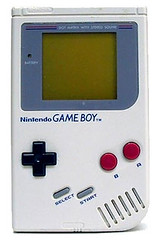 |
Original/Classic DMG-01 Of course, this is where it all started. And while it may be the most boring in terms of style, this model is still, by far one of the most iconic pieces of Nintendo hardware of all time. |
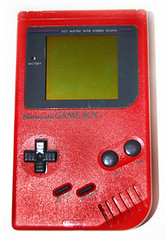 |
Play It Loud Play It Loud was Nintendo’s initial effort to generate increased interest in the Game Boy. When the series went to market in 1995, a number of rival portable systems had already come out to compete against the Nintendo’s handheld champion. Instead of changing anything under the hood, Play It Loud was simply a paint job and a new ad campaign for Nintendo’s already successful system. The DMG shed its drab grey skin and re-released with a number of colored models. While this may have not been a particularly effective strategy in winning over hardscore fans of Sega’s Game Gear, Play It Loud was still instrumental in renewing interest in the Game Boy during the mid-90’s. |
 |
Game Boy Pocket None would argue that the DMG was designed to be portable, but some still contend that the original unit was far too unwieldy to be conveniently carried around. Intent on turning ‘portable gaming’ into ‘pocket gaming’, Nintendo release the Game Boy Pocket. The hardware had no notable improvements, but was now shrunken down to fit inside a far more sensably sized unit. The screen was much sharper and had its charming-yet-distracting green tint removed. The Game Boy link cable port was also changed, requiring links between Original Game Boy and Game Boy Pocket to use a converter. Naturally, the release of Game Boy Pocket brought with it an enormous surge in portable sales for Nintendo. |
 |
Game Boy Light This variation of the Game Boy Pocket was never released outside of Japan and contained only one notable improvement: The inclusion of a backlit screen. The unit is often coveted by chiptune artists who typically use their systems to perform in dark venues. To this day, the model is still extremely difficult to find in the US, and lucky eBayers will oftentimes need to pay a harsh premium in order to attain this rare beauty. |
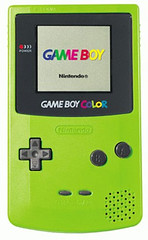 |
Game Boy Color Finally, the Game Boy that everyone had been waiting for! Sort of. The Game Boy Color brought Nintendo’s line of portable gaming systems into the world of color. Featuring a selectable color palette as well as updated processor, screen and memory, the Game Boy Color played special games made specifically for it.  In most cases, the only difference between these cartridges and the old Game Boy’s was an added chip containing color information that could be read by the Game Boy Color.  There were some games later on that had extra processing requirements and more demanding color palettes that could be only run on a Gameboy Color. The Gameboy Colors system was also backwards compatible with all original Game Boy games, but its placement of color for non-GBC games was always a bit off. Nevertheless, The Game Boy Color still gave the Game Boy line another much-needed boost to compete with the increasingly populated portables market in the late 90’s. |
20 Years Later
The Game Boy is a system so prominent that its influence can be found not just within the portable systems that followed in its footsteps, but within the very fabric of popular culture. It’s a piece of hardware that is constantly re-evaluated and re-purposed, in a way delaying its own obsolescence.
One of the most telling examples of this phenomenon is the rise of chiptunes, a genre of music made using obsolete computer and gaming hardware.
Oliver Wittchow, a programmer from Germany wrote software for Game Boy in the late 90’s that allowed music production and live performance using the Game Boy’s hardware. This program, Nanoloop, was eventually sold on Game Boy cartridges and distributed worldwide, followed shortly by another program, Little Sound DJ, developed by Swedish programmer Johan Kotlinski. Soon scores of musicians around the world began writing music for Game Boy, and underground micro-music scenes began to appear in major cities. The rising popularity of chip music around the world truly exemplifies the legacy of this incredible hardware. As does any number of bizarre mods and projects you may stumble upon while browsing the web, such as the fully-functional giant Game Boy seen below.
With so much culture revolving around a two decades-old piece of hardware, it’s clear that the Game Boy is more than just a gaming system. It’s a common link; A symbolic piece of shared history amongst both gamers and non-gamers.
Affiliate programs and affiliations include, but are not limited to, the eBay Partner Network or Amazon Associates.
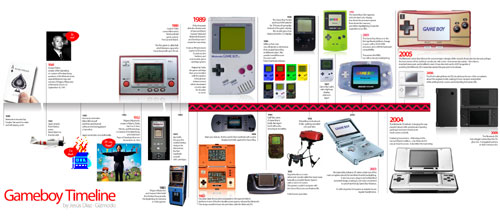
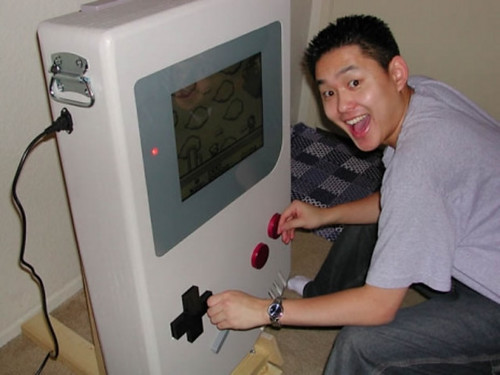
“The only difference between these catridges and the old Game Boy’s was an added chip containing color information that could be read by the Game Boy Color.”
1. catridge? Not cartridge?
2. There were a number of cartridges that ONLY worked in GBC. These, on top of having the color chip, had a protruding Game Boy logo at the top that prevented it from fitting into the machine. Additionally, they used the additional clock speed for games that, even aside from color, simply wouldn’t have been possible on earlier models of Game Boy.
Very good article. Do we have to wait until next year for one based on the Game Gear. What about the NGPC?
@Covarr
Good eye spotting that ‘catridge’. I’m gonna need to give this sucker a once-over :3
I do remember the GBC-only cartridges though! Thing is, I’ve never seen one myself and I’m not familiar with which games were put in that format, so it slipped my mind.
A good example is the Super Mario Bros Deluxe cartridge.
Corrections made 🙂
awesome article
I love the Gameboy. A lot of people say that the titles weren’t as good as the NES, but it still has a lot of good games. If you haven’t played Mega Man V, you’re missing out.
Gameboy color games had different cartridges in that the top left corner lacked the small ridge that allowed the original GameBoy to power on, as it’s cartridge lock wouldn’t be able to slide out with the power switch.
Very good article! Still waiting for the Game Boy Hidden Gems article… 🙁
Great article! I never owned a Gameboy, but man I wanted one bad when I was a little fella.
That’s so weird that this site and GameSpite both erroneously listed Kirby’s Dreamland as being only four levels long this month, when there are really five. Is it because Spring Breeze on Kirby Super Star only has four levels or because people don’t count the 5th level since it is sort of a rehash?
never like gameboy especially the 1st model gameboy color was better this never got one.
I`ve got play it loud gameboy
I still remember my first console was a Green PLay iT LouD model GameBoy and the very 1st game i played on it was the King of Fighters 95. It brings me so much memories. I played a lot of games on it and love it dearly till now although it’s been long demised(it was smashed during a heated argument with my family members). I will forever regard it as one of the best console to bring me great gaming memories..Final Fantasy, SuperRobotWar, SlamDunk and lots of others….
I’d gladly raise a toast to the old grey brick, but not before you mention lsdj 🙂 pretty much created the whole bitpop scene.
nevermind, this place could use and edit button.
The Gameboy was amazing for its time. No other portable system had as many good games. However, I found the DS to be even more amazing because I now can play the type of 3D games that used to require a huge box of a console called the N64. Still, the Gameboy will always have a place in my heart because of its shear amount of classics that can even play on my GBA.
Back in 1995/96 this was my favorite video game system.Sadly though i never advanced beyond Super GameBoy.Nonetheless,the selection of quality 1st party and 3rd party games(Capcom,Konami notably)were reasons why i purchased this phenomonal game system.
14 years before they finally put a light on the damn thing. Kids these days are so spoiled. I remember having to use a headlamp to play mine in the dark.
Great article! I can’t wait for the hidden gems. Hope Hexcite makes the list, that game is criminally underrated!